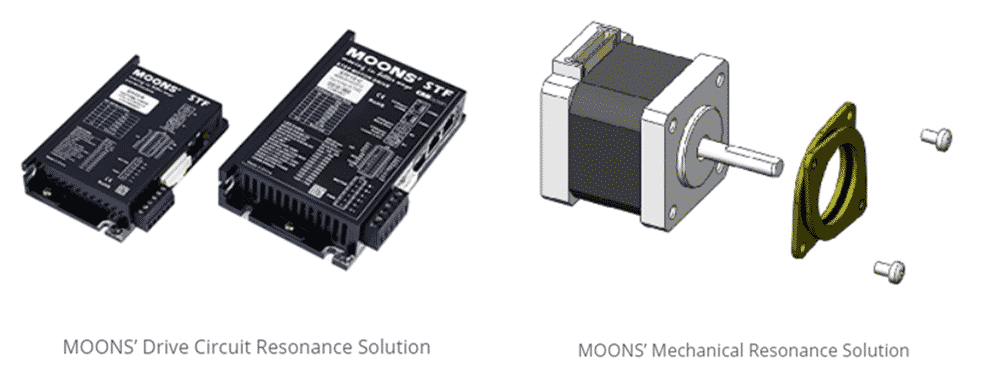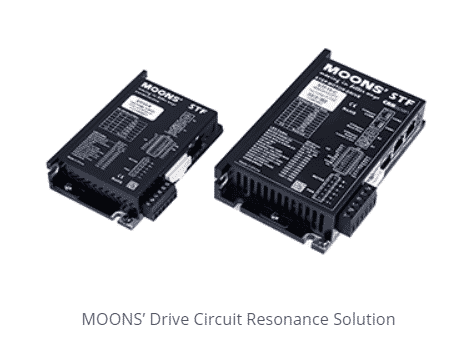Stepper motors have more advantages of simple structure, easy to control, high safety, low cost, high torque, etc. As a high performance digitized electrical component, stepper motors are widely used in different types of open-loop control systems. However, stepper motor has a disadvantage that in simple open loop it can be noisy at low speed. Noise and resonances mainly come from the drive circuit and the mechanical structure of resonance. In our Moons’ portfolio we have some good solution to reduce both.
The cause of vibration noise by an average driving circuit in the market :
– The higher harmonic content of stator current
– Unbalanced two-phase current, especially the constant voltage drive method.
– Power supply voltage fluctuation
– Excitation current waveform
The main reason for the noise is higher harmonic. Stepper motors are driven by square wave current, which must contain a large number of higher harmonics, thus producing vibration and noise. Combined with the advanced DSP digital intelligent control technology, MOONS’ designed a cost-effective fractional SR series drives to automatically calculate the resonance points for the stepper motor system and adjuster the control algorithm to achieve the purpose of resonance suppression. This technology greatly improves the stability of if the frequency and enables the output of larger torque at high speed. By analyzing the low-speed torque ripple, the corresponding harmonic components can be offset to obtain smooth low-speed motion and reduce vibration. To accommodate the use of the feed motor in industrial control applications more widely, MOONS ‘also introduced the ST series step actuators with communications and the STF series step actuators.
MOONS’ Mechanical Resonance Solution
Every stepper motor has a resonance spot. For each step that the motor takes, the rotating part, or rotor, oscillates around the new position before coming to a stop. The amount of time the motor oscillates is called its settling time. The rate of oscillation matches the resonance frequency with every step that the motor takes. The result is a motor that vibrates and has jitter. For smooth operation, engineers try to design motors with resonance frequencies higher or lower than the operational envelope.
Most troubleshooting guides recommend modifying several factors to fit the application. For example, raising or lowering operating voltage or current, adding inertial load, or using a higher step resolution shifts the resonant frequency of the motor.
However, it may not be possible to change operating parameters enough to improve performance without jeopardizing the overall design. In such situations, it might be best to go with a damper. Dampers are used to reduce resonances, reduce noise, and improve the response time of step motor systems. They are mounted between the motor and machine, and work by energy-absorbing rubber absorbs shock to reduce shock impulses and dissipating the kinetic energy in resonances. This can greatly improve system stability, eliminate noise, allow for much smoother motion at low speed, and provide greater torque utilization at higher speeds. When performing fast point-to-point moves, a damper can enhance the system transient response and reduce settling time. This improves control accuracy.

Moons Industries. (2019, 05 07). MOONS’ Stepper motor reduce noise vibration resonance. Retrieved from Moons Industries: https://moonsindustries.com/

